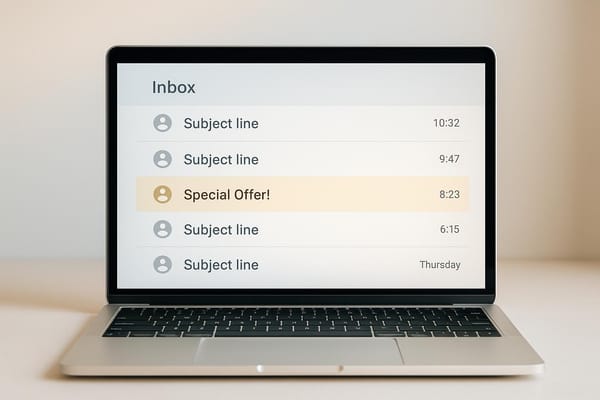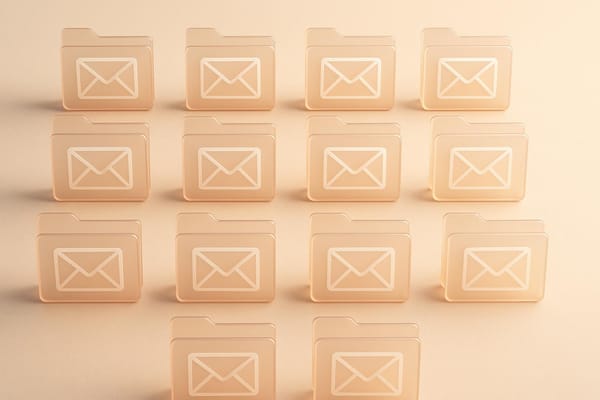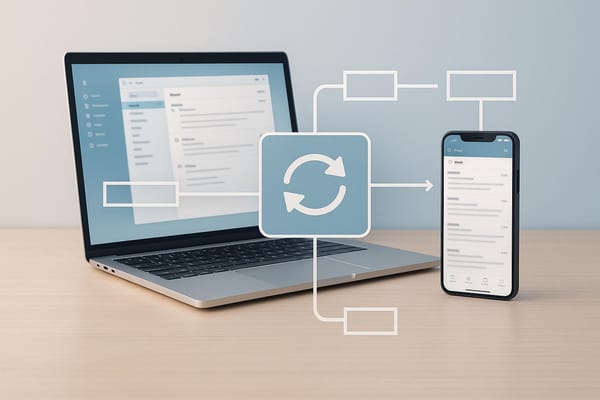How A/B Testing Improves Email Reply Rates
A/B testing can boost email reply rates by 15%-30% by refining subject lines, CTAs, and send times, leading to more effective campaigns.
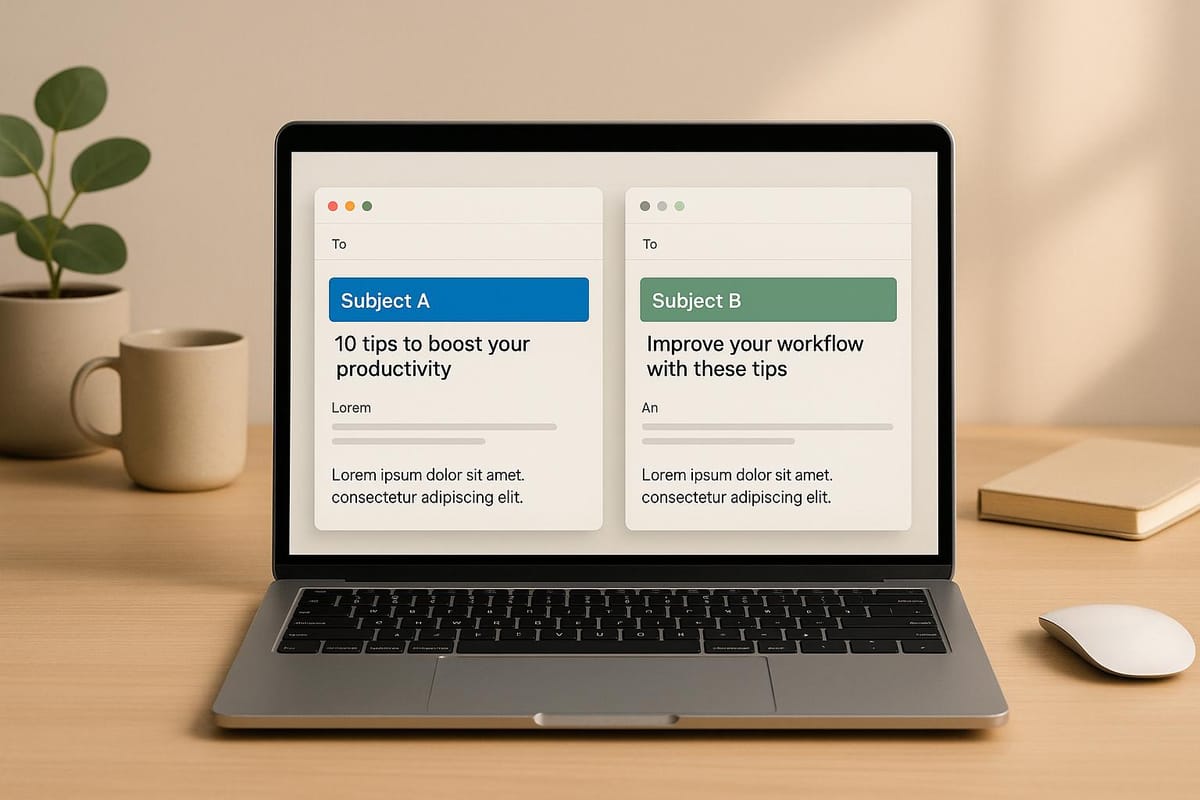
Want better email reply rates? A/B testing can help you refine your cold email campaigns by testing small changes like subject lines, CTAs, or send times. Research shows reply rates can improve by 15%-30% when A/B testing is applied systematically.
Here’s how it works:
- Test one variable at a time (e.g., subject line vs. timing).
- Use a statistically significant sample size (at least 100 replies per variation).
- Analyze metrics like open rates, reply rates, and conversions to see what works.
For example, companies like Primeforge and Shop Home Med increased reply rates by 67% and revenue per recipient by 306%, respectively, by using A/B testing to fine-tune their emails.
Tools like Icemail.ai simplify email infrastructure setup, ensuring your emails land in inboxes while supporting A/B testing. Want results? Start testing smarter today.
What Is AB Testing in Email Marketing? Complete Tutorial 2025
Research Data on A/B Testing and Reply Rates
Industry research and campaign data reveal that reply rates can increase by 15%-30% when systematic A/B testing methods are applied. This evidence highlights how structured testing not only boosts reply rates but also improves overall campaign effectiveness. These improvements often set successful campaigns apart from those that fail to make an impact.
What’s especially noteworthy is how consistent these results are across various industries. Whether you’re targeting SaaS decision-makers or buyers in the medical supply field, the core principle holds true: testing specific variables leads to measurable gains in engagement.
How A/B Testing Works
A/B testing in cold email campaigns involves changing one variable at a time to identify which elements drive better engagement. Instead of relying on guesswork, create two email versions that differ in only one aspect - such as the subject line, opening statement, or timing of the call-to-action.
Divide your email list into equal, demographically similar groups. For reliable results, you’ll need a statistically significant sample size. Experts recommend gathering at least 100 replies per variation before making conclusions. Depending on your expected reply rates, this could mean sending thousands of emails per test group. Testing with too small a sample size or rushing the process can lead to inaccurate results, potentially harming your campaign.
It’s crucial to focus on testing one element at a time. For example, if you modify both the subject line and email body simultaneously, it becomes impossible to pinpoint which change led to better performance. While this methodical approach takes more time, it provides actionable insights that can be applied to future campaigns. This controlled testing process ensures that results are both measurable and reliable.
Case Studies: Companies That Improved Reply Rates
Real-world examples demonstrate the effectiveness of A/B testing across different sectors. In Q2 2023, Primeforge ran a detailed A/B test for a SaaS client targeting 2,400 prospects. By splitting the list into two equal groups and incorporating advanced personalization that addressed specific pain points, the campaign achieved a 67% increase in reply rates compared to their traditional methods.
Another example comes from MailShake, which collaborated with Robert Allen of Acme Advisors & Brokers in 2022. By using feedback-driven A/B testing, they improved reply rates from 9.8% to 18%, an 83% increase. This boost translated into a 97% uptick in booked appointments, showing how A/B testing can drive tangible business outcomes.
The medical supply industry also saw impressive results. In 2023, Shop Home Med optimized subject lines, pre-headers, and send times through systematic A/B testing. Their efforts led to a 306% increase in revenue per recipient. This highlights how even small, carefully tested adjustments can result in major financial gains.
Another campaign reported a 19% reply rate, along with an 80% open rate and 0% unsubscribe rate, after implementing A/B testing protocols. This combination of high engagement and zero opt-outs indicates that A/B testing helps craft messages that genuinely resonate with audiences, rather than just grabbing fleeting attention.
Across these case studies, common themes emerge: testing single variables, maintaining a disciplined testing process, and analyzing both quantitative data and qualitative feedback. These companies didn’t just measure reply rates - they also evaluated the quality of responses and how those replies translated into meaningful business opportunities.
Key Metrics to Track During A/B Testing
When running A/B tests, there are six key metrics you should keep an eye on: open rate, click-through rate (CTR), reply rate, conversion rate, bounce rate, and unsubscribe rate. Together, these metrics map out the recipient's journey and provide a clear picture of how well your email campaigns are performing at every stage.
By tracking these metrics, you can make informed decisions based on data rather than intuition. Analyzing them collectively allows you to pinpoint exactly where your emails are succeeding - or falling short - on the path from initial engagement to final conversion. Let’s start by breaking down the metrics that measure early engagement: open rate and click-through rate.
Open Rate and Click-Through Rate
Open rate tells you the percentage of recipients who open your email, making it a critical first indicator of success. This metric reflects how enticing your subject line and preview text are, as these are the primary factors influencing whether someone decides to open your message. A low open rate often points to issues like weak subject lines or a damaged sender reputation.
Click-through rate (CTR) measures the percentage of recipients who click on links within your email. It shows how effectively your email content drives readers toward your desired action, whether that’s visiting a landing page, scheduling a meeting, or downloading a resource. If your open rate is high but your CTR is low, it’s a sign that your email content isn’t delivering on the promise made by your subject line.
The interplay between these two metrics can reveal valuable insights. For example, PetLab Co saw a noticeable boost in both open rates and overall engagement after A/B testing their subject lines. Similarly, Shop Home Med achieved dramatic improvements in early engagement by systematically testing subject lines, pre-headers, and send times. Both examples highlight how small adjustments can lead to big gains in initial engagement.
While open and click metrics focus on the early stages of engagement, reply and conversion rates dive deeper into recipient behavior.
Reply Rate and Conversion Rate
Reply rate measures the percentage of recipients who respond to your email, making it a strong indicator of genuine interest and engagement. Replies require effort, so this metric shows whether your message resonates enough to spark a conversation.
Take Robert Allen of Acme Advisors & Brokers, for example. By using MailShake to guide A/B testing in 2022, he increased his reply rate from 9.8% to 18%. This improvement nearly doubled his response rate, leading to more business opportunities and appointments.
Conversion rate, on the other hand, tracks the percentage of recipients who complete your desired action after engaging with your email. This could mean booking a call, signing up for a trial, or making a purchase. Conversion rate is the ultimate measure of how well your email drives recipients toward your campaign’s goal.
Shop Home Med serves as a powerful example here. After refining their emails through A/B testing, they achieved a 228% increase in conversion rate, contributing to a 306% increase in revenue per recipient. This underscores how optimizing conversion rates can directly impact your bottom line.
If your reply rate is high but your conversion rate lags, it’s worth examining your follow-up process or the clarity of your call-to-action. This gap often indicates that while your emails generate interest, they may not clearly guide recipients to the next step.
Bounce and Unsubscribe Rates
Bounce rate measures the percentage of emails that fail to reach recipients’ inboxes. Common reasons include invalid email addresses, full inboxes, or technical issues. High bounce rates can harm your sender reputation and reduce future deliverability, as email service providers may interpret them as signs of poor list quality or spam-like behavior.
Unsubscribe rate tracks how many recipients opt out of your emails. While some unsubscribes are normal, a high rate signals that your content isn’t resonating or that your targeting is off. Both bounce and unsubscribe rates can negatively impact your deliverability and sender reputation.
Revnew provides a great example of how attention to detail can pay off. During their A/B testing, they maintained excellent email hygiene, achieving 2% bounce rates, 0% unsubscribe rates, an 80% open rate, and a 19% reply rate. This demonstrates how clean lists and relevant messaging can work together to maintain strong performance.
High bounce and unsubscribe rates can result in blacklisting or reduced inbox placement, so it’s vital to monitor and minimize these metrics. Tools like Icemail.ai can help by automating domain setup, managing DNS, and optimizing mailboxes to improve deliverability.
How to Run A/B Tests for Cold Email Campaigns
Building on the metrics discussed earlier, let’s dive into how to execute A/B tests effectively. When done right, A/B testing can significantly boost your reply rates and improve the overall performance of your campaigns. But success here hinges on careful planning, disciplined execution, and thoughtful analysis.
The first step? Define your objective. Are you aiming to increase reply rates, improve open rates, or drive more conversions? A clear goal keeps your testing focused and allows you to measure success accurately. Once your objective is set, segment your audience into comparable groups to ensure fair and reliable results.
What to Test: Subject Lines, CTAs, and Timing
Some elements in your cold emails have a bigger impact than others, and these are the ones worth testing: subject lines, CTAs (call-to-actions), email body copy, and sending schedules.
- Subject lines are often the game-changer. They directly affect whether your email gets opened. For instance, Primeforge tested personalized subject lines against generic ones in a campaign targeting 2,400 mid-sized SaaS companies. The result? Open and click rates nearly doubled, leading to a 67% jump in reply rates and a 40% improvement in open rates.
- CTAs also play a key role. Experiment with different phrases, placements, and even the number of CTAs. While some campaigns work best with a single, clear CTA, others might benefit from offering multiple options to match varying levels of recipient interest.
- Email body copy is another area to refine. Testing variations in tone, length, personalization, and how you frame your value proposition can help you identify what resonates most with your audience.
- Sending schedules are often overlooked but can make a difference. Different industries and roles might respond better to emails sent at specific times or on particular days.
The key is to test one variable at a time. If you change too many things at once, it becomes nearly impossible to pinpoint what actually drove the results.
Getting Accurate Test Results
To get meaningful insights, you need a statistically significant sample size and enough time for your test to run. For example, if your reply rate is 5%, you’d need to send around 2,000 emails per variation to gather reliable data. Aiming for at least 100 replies per variation is a good benchmark.
Avoid the temptation to end tests too early. Early results can be misleading due to small sample sizes or timing differences. For instance, emails sent on a Monday might perform differently than those sent on a Friday. To account for these variations, aim to run tests for at least a full week.
Don’t just focus on the numbers - analyze the replies themselves. Robert Allen from Acme Advisors & Brokers saw his reply rate jump from 9.8% to 18% after using feedback from responses to guide his A/B testing. By looking at the tone and content of replies, he gained a deeper understanding of what resonated with his audience.
Lastly, ensure your test groups are evenly split. Divide your list based on factors like company size, industry, or job role to avoid skewed results. This ensures you’re comparing apples to apples, not apples to oranges.
Test, Analyze, and Improve
The real power of A/B testing lies in what you do after the test. Once you’ve collected enough data, dig into both the numbers and the feedback. Don’t just stop at open or reply rates - look at the quality and sentiment of the responses you’re receiving.
Take Shop Home Med as an example. By systematically testing subject lines, pre-headers, and send times, they achieved incredible results: a 114% increase in open rates, a 186% jump in click rates, a 228% boost in conversion rates, and a 306% rise in revenue per recipient. These gains came from continuous testing and refinement.
Keep a log of your tests. Document what you tested, the results, and any insights gained. This record will save you time and help you avoid repeating tactics that didn’t work.
It’s also crucial to monitor deliverability metrics during your tests. High bounce rates or spam complaints can hurt your sender reputation and skew your results. Tools like Icemail.ai can help you maintain strong deliverability with features like automated domain setup, DNS management, and mailbox optimization.
Top Tools for A/B Testing and Cold Email Campaigns
Choosing the right tools can make or break your A/B testing and cold email efforts. The challenge lies in finding platforms that combine strong A/B testing capabilities with dependable email infrastructure. One standout solution that strikes this balance is Icemail.ai.
Icemail.ai: A Reliable Option for Cold Email Infrastructure
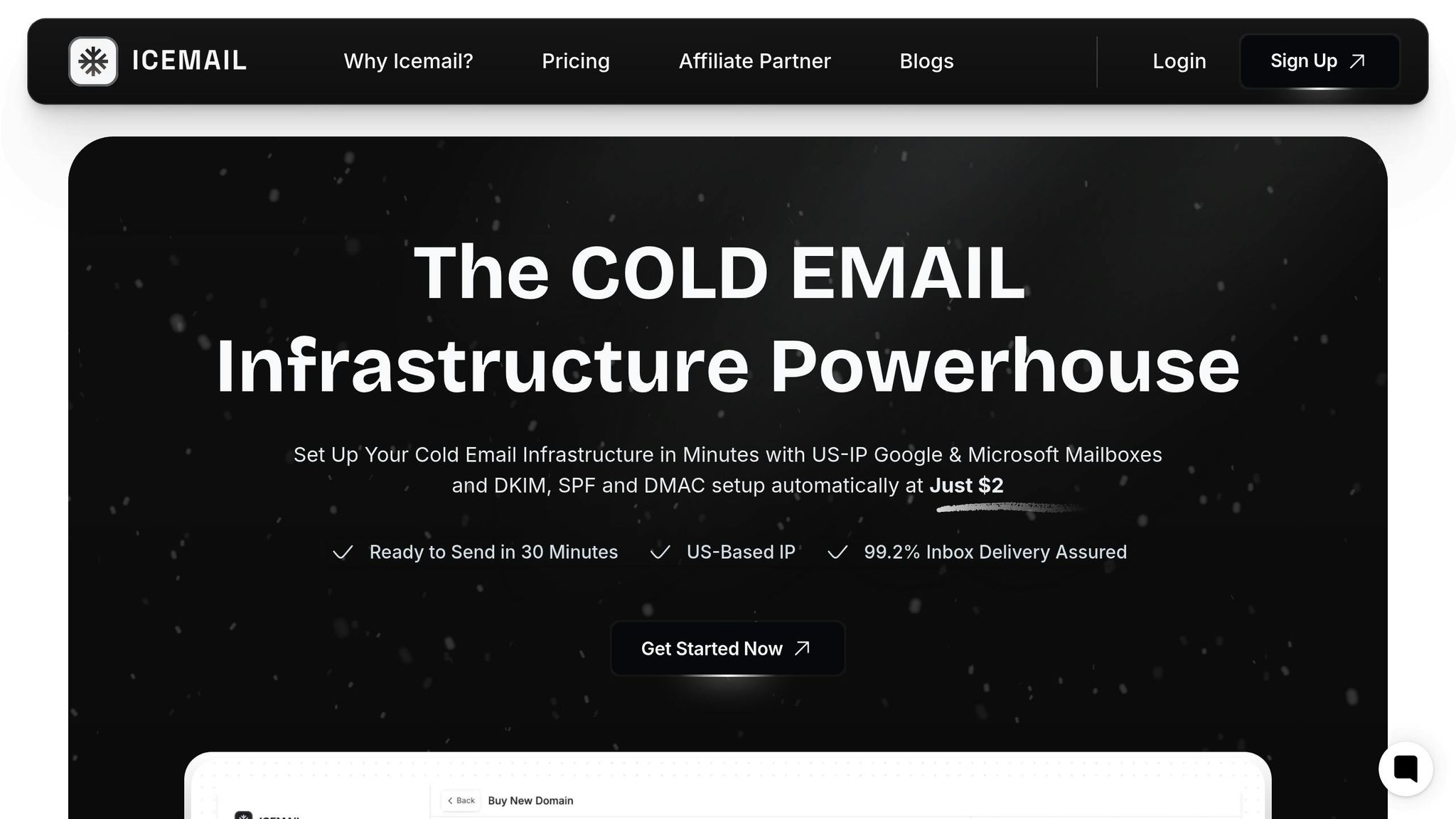
A solid email infrastructure is essential for successful A/B testing, and Icemail.ai delivers exactly that. It’s a top choice for businesses that need both scalability and dependable email deliverability - an area where many other platforms fall short by focusing only on campaign management.
Icemail.ai simplifies the process with a 10-minute onboarding system that automates setup for Google Workspace and Microsoft mailboxes. It configures DKIM, DMARC, and SPF settings automatically, so you can start A/B testing quickly without the hassle of manual configurations. This speed is a game-changer, especially for campaigns requiring multiple mailbox setups.
The pricing is straightforward: Google Admin mailboxes cost $2.50/month, Microsoft mailboxes are $3/month, IMAP/SMTP mailboxes are just $0.50/month, and pre-warmed mailboxes are around $5/month. Plus, Icemail.ai includes a 1-click import/export feature, making it easy to transfer mailbox settings between different tools. This flexibility ensures you can integrate it seamlessly with your preferred A/B testing platforms.
Comparing Competitors: Features and Performance
While Icemail.ai shines in email infrastructure, other platforms offer a variety of features that cater to different needs. Take Smartlead.ai, for example. Trusted by over 87,000 businesses, it’s a comprehensive tool with robust A/B testing features and advanced campaign management.
Smartlead.ai combines integrated testing and analytics with detailed data tracking. Arnold Koci, CEO of Acquisizioneclienti.it, shared his experience with the platform:
"Best cold outbound email software out there. Everything, is fast, reliable, scalable, you can also white-label, amazing analytics and never breaks like other similar competitors."
Users also report impressive deliverability. Some have successfully avoided spam filters while sending over 2,000 emails daily for months. Pricing starts at $39/month for the Basic Plan, which supports 2,000 active leads and 6,000 emails per month. For larger campaigns, the Custom Plan offers up to 12 million active lead credits at $174/month.
That said, Icemail.ai differentiates itself with its infrastructure-first approach. While Smartlead.ai excels in campaign management and native A/B testing, Icemail.ai’s specialized focus on automated email infrastructure makes it a go-to for marketers who need reliability and speed. Many cold email professionals combine the two - using Icemail.ai for its infrastructure and pairing it with dedicated A/B testing tools for optimization.
| Feature | Icemail.ai | Smartlead.ai | Traditional Platforms |
|---|---|---|---|
| Setup Time | 10 minutes | Standard onboarding | Hours to days |
| Infrastructure Focus | Automated, premium setup | Integrated approach | Basic configuration |
| Mailbox Pricing | $2.50–$5/month | Included in plans | Varies widely |
| DNS Management | Automated DKIM/DMARC/SPF | Standard setup | Manual configuration |
| A/B Testing | Via integration | Native features | Limited capabilities |
| Scalability | Unlimited mailboxes | Plan-based limits | Platform dependent |
For marketers who value quick setup, dependable infrastructure, and cost-effective solutions, Icemail.ai stands out as a tool that simplifies A/B testing without compromising on performance.
Conclusion: Using A/B Testing to Get More Email Replies
A/B testing turns cold email campaigns into data-backed strategies rather than relying on guesswork. For example, Primeforge saw a 67% boost in reply rates, while Acme Advisors nearly doubled their results, jumping from 9.8% to 18% reply rates.
The key to success lies in targeted experimentation - adjusting one variable at a time, like subject lines, personalization, or timing. Shop Home Med demonstrated this perfectly, achieving a staggering 306% increase in revenue per recipient through A/B testing.
Of course, even the best testing strategies need a solid foundation. Tools like Icemail.ai ensure your email variations actually reach inboxes, boasting a 99.2% delivery rate. With features like a quick 10-minute setup, automated DKIM, DMARC, and SPF configuration, and the ability to manage hundreds of mailboxes seamlessly, it’s designed to support scaling without sacrificing deliverability.
The most effective campaigns combine clear hypotheses, thoughtful segmentation, and ongoing feedback - both numbers and user insights - to keep refining and improving your messaging.
FAQs
How do I choose the right sample size for A/B testing to get accurate results?
To figure out the right sample size for your A/B test, you'll need to think about a few key factors: the expected difference in performance between your variations (effect size), the level of statistical confidence you want, and the current baseline performance of your emails. An online A/B test sample size calculator can make this process much easier.
While larger sample sizes tend to give you more reliable results, they also take longer to collect. For cold email campaigns, tools like Icemail.ai can simplify your outreach process. They help ensure your emails are delivered effectively and at scale, allowing you to concentrate on fine-tuning your campaigns.
What are common pitfalls to avoid when running A/B tests for email campaigns?
When running A/B tests for email campaigns, there are a few common pitfalls you'll want to steer clear of to get reliable and actionable insights. First, keep it simple - test one element at a time. Whether it's the subject line or the call-to-action wording, isolating a single variable makes it easier to pinpoint what’s driving the change. Second, make sure your sample size is big enough. Testing with too few recipients can lead to shaky conclusions that might not hold up in the real world. Finally, give your tests enough time to run. Cutting them short can lead to incomplete data and decisions based on a skewed picture.
Using tools like Icemail.ai can make this process smoother. Its premium email infrastructure ensures your messages land in inboxes efficiently, and its fast setup means you can focus on fine-tuning your campaigns instead of wrestling with technical issues. The result? A more streamlined path to boosting your reply rates.
How does Icemail.ai make A/B testing in cold email campaigns more effective than other platforms?
Icemail.ai simplifies A/B testing for cold email campaigns by providing quick inbox setup and better email deliverability. Its automated system works seamlessly with Google Workspace and Microsoft mailboxes, offering features like 1-click import/export and automated setup for DKIM, DMARC, and SPF. These tools not only save valuable time but also help ensure your emails land in the inbox where they belong.
What sets Icemail.ai apart from other platforms is its high-quality service and outstanding user reviews. Businesses aiming to boost their cold email performance often choose Icemail.ai, with many users noting improved reply rates thanks to its smooth setup process and expert advice on email best practices.


